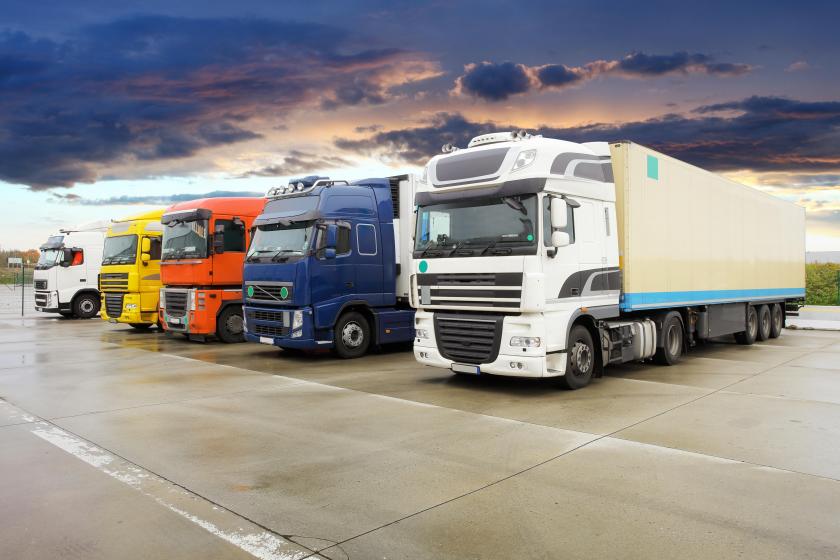The Internet of Moving Things: How to Deploy IoT on the MoveThe Internet of Moving Things: How to Deploy IoT on the Move
The Internet of moving things presents a different set of network building and orchestration conditions and challenges compared to stationary IoT.
July 12, 2023

Drone fleets, truck fleets, autonomous vehicles, and packages are just a few of the IoT "things" that are on the move. In the IoT world, networks can track and trace events and assets—but when the IoT moves, tracking, tracing, monitoring, and overall network integration become more complex. As a result, the Internet of moving things needs special network design and deployment considerations.
What’s different about IoT that moves?
IoT in motion comes with a different set of challenges than IoT that is fixed. In a fixed IoT deployment, such as security cameras that are installed throughout a building, it’s relatively straightforward to connect IoT devices to a network because they are fixed and do not move. You don’t have to worry about tracking or tracing these fixed devices under normal circumstances. Security is also easier because you know exactly where the devices are, and it’s easy to monitor and maintain them simply because they are fixed.
However, with the Internet of Moving Things, IoT is constantly changing. In some cases, the places it moves to allows it to work with wired network topologies. In other cases, moving IoT must function strictly in a wireless context that may seem like Wi-Fi but isn't exactly that.
Internet of moving things example one: In-field drones
Construction, mining, oil and gas, scientific expeditions, and utility operations all use drones in the field. A popular field deployment consists of setting up a mobile field office and operating drones within eyesight from the ground. Sensors on board the drone collect data such as photos and videos and often store these in onboard storage. Drone operators use wireless RF frequencies to communicate with and direct the drone.
Often the data collected by the drone is then downloaded to a local server in a field office. This data is later uploaded via the Internet to a central data repository that may be in a corporate headquarters.
For network implementers, several choices have to be made.
The first choice has to do with the radio frequency (RF) that the operator uses to communicate with the drone. 2.4GHz RF is often used, but if the drone must operate in an area where there already is a lot of wireless traffic, the network implementer might opt to go with 5.8 GHz RF since it can screen out interference from other wireless communications that are occurring in the area.
The second network decision concerns the ultimate transfer of what could be larger data payloads between a local server in a field office and central headquarters. Sites often use secure cloud-based Internet transmission to perform these large file transfers, and they schedule the transfers to occur at non-peak times so as to incur the least cost. They may also elect to store their data in the cloud itself. A decision needs to be made as to how to best transport and store collected data.
The third decision concerns security with moving IoT. Are field office servers secured in locked rooms at the end of the day? Do only those cleared to access them do so? What about the drones themselves? Are they tracked and traced if lost on missions, stored safely when not in use, and kept in top working order, with batteries always fully charged?
By necessity, these administrative tasks must be carried out by non-IT people in the field who must be trained in IT security policies, procedures, and maintenance—and IT network administrators will likely be called upon to do this.
Internet of moving things example two: Autonomous vehicles
Network communications between moving vehicles on roadways are wireless and dynamic. In this use case, each vehicle becomes its own closed-loop wireless network that communicates with sensors in other vehicles and with satellites for GPS.
The goal with autonomous vehicles on roadways is to effect 360-degree awareness within each vehicle of every other vehicle’s bearings (e.g., location, speed, destination, etc.). This is accomplished by using wireless V2V (vehicle-to-vehicle) communications, which are used to exchange information between vehicles.
In this mobile wireless deployment, each vehicle acts as its own self-contained network. When vehicles communicate with each other, it is actually network-to-network wireless communications over V2V.
Those in charge of building and maintaining these vehicle networks must decide when to issue software and security updates, such as when vehicles aren’t being operated.
Security is also a challenge. Present thinking is that there should be self-contained network control software in each car that can take over and operate the car without outside network help if a security breach that breaks communications to the outside occurs.
In both of these situations, effective network automation and how to effectuate it are key considerations for network planners.
Internet of moving things example three: Truck fleets
Like autonomous cars, trucks also have the ability to operate as closed-loop networks, but the larger goal in trucking logistics management is to have an overall, centralized network that can track, trace and monitor all events and vehicles across a geographic space.
To do this, telematics are used.
Telematics comes in the form of a fleet management system that interacts with IoT sensors that are on board moving trucks so trucks can be tracked, traced, and monitored from the beginning to the end of a journey. If there is a complication along the way, the telematics software issues an alert to appropriate personnel so they can resolve the issue.
Top of mind for network professionals in this model is ensuring network communications between the central fleet management software and the IoT that is distributed in the field and ensuring that all endpoints are secure and in good working order.
The overall network framework for this implementation is a combination of wireless and wired communications that must fully integrate with each other—accompanied by software and security updates that are made in a timely manner.
A final word on the Internet of moving things
Network building and orchestration for moving IoT presents a different set of conditions and challenges than stationary IoT.
Security is a greater concern because the IoT is always moving and never under IT's full control. Non-IT professionals in the field who are called upon to service and monitor this equipment must also be trained in network security practices.
Software and security updates must be carefully planned and orchestrated so they are performed when IoT is preferably not in motion.
Finally, the closed-loop networks for moving IoT in the field must still be able to integrate and communicate with an enterprise’s larger network mesh framework if end-to-end network visibility is to be achieved.
In all of this, the technology choices and maintenance will differ. Wireless technologies for moving IoT will not always be WI-FI or Bluetooth. Maintenance for IoT devices like drones must include regular recharges of batteries after every mission.
What we do know about moving IoT is that it will demand both wired and wireless networks that can work together seamlessly, along with the IT network pros and non-IT employees in the field that must keep it running.
Related articles:
About the Author
You May Also Like




